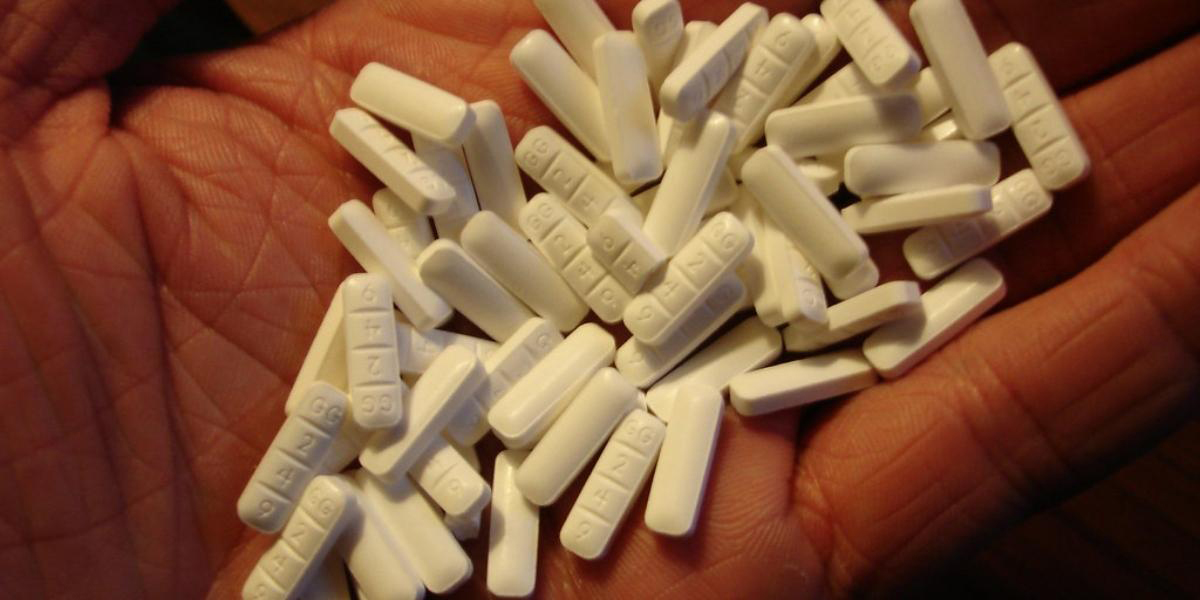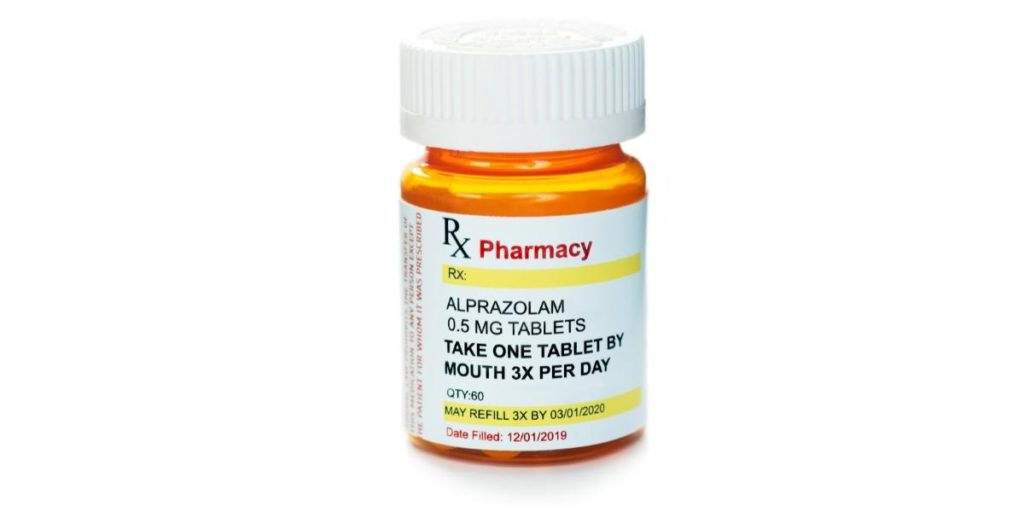Can You Overdose on Xanax?
How Much Is Too Much?

Xanax overdose is not often thought of as a common risk. However, the National Institutes of Health (NIH) has reported that alprazolam, the generic name for Xanax, is the most toxic and the most widely prescribed drug of its class.
It is also the most prescribed psychotropic or mood-altering medication in the United States— accounting for more than 48 million prescriptions in 2013 alone.
NIH reports also include that Xanax is more commonly involved in intentional self-poisonings and accidental overdose deaths. And with increased prescriptions to this medication every year, there are elevated concerns over the risk of overdose.
What Is Xanax?
Xanax is the brand name for the drug alprazolam used to treat anxiety and panic disorder and help with insomnia. It is also sometimes used to treat depression, agoraphobia, a fear of unknown places, and premenstrual syndrome.
Alprazolam is the most commonly prescribed benzodiazepine, or benzo, a popular family of drugs known as tranquilizers or sleeping pills.
Benzodiazepines are involved in approximately one-third of suicide attempts or intentional overdoses. Alprazolam, or Xanax, is more toxic than other benzos like clonazepam (Klonopin) or diazepam (Valium) because it is incredibly potent and frequently abused for its quickly felt effects of euphoria and disinhibition.
Addiction specialists warn that Xanax is highly addictive and has limited usefulness because many doctors prescribe it for longer than recommended.

How Do Benzodiazepines Work?
Xanax belongs to a class of drugs called benzodiazepines that work by increasing the body’s central nervous system’s primary neurotransmitter, gamma-aminobutyric acid (GABA).
GABA blocks or suppresses specific brain signals and decreases activity in your nervous system. However, benzodiazepines don’t change your GABA neurotransmitter’s release, production, or metabolism but instead increases its ability to bind to receptors in the brain.
This enhanced binding of GABA to receptors activates the chloride ion channel, located in the center of the GABA neuron and responsible for transmitting nerve impulses and regulating excitability. The rush of chloride ions into the GABA suppresses the neuron, ultimately causing a calming, sedative effect.
Side Effects of Xanax
The widespread misuse of alprazolam has established the recognition of its unwanted effects. Compared to the desirable impacts, the drug produces more adverse reactions. Xanax can cause some people to have side effects including:
- Euphoria
- Disinhibition
- Calmness
- Talkativeness
- Increased salivation
Adverse Effects
Xanax may be habit-forming and cause physical dependence, especially with regular consumption for several days to weeks.
Some adverse effects of using Xanax can be life-threatening because it is typically popular amongst people already using drugs like alcohol and opioids such as heroin. Common adverse effects include:
- Memory problems
- Fatigue or tiredness
- Slurred speech
- Trouble concentrating
- Irritability
- Constipation
- Diarrhea
- Nausea
- Blurred vision
- Upset stomach
- Joint pain
- Headaches
- Loss of interest in sex
- Stuffy nose
- Swelling of hands or feet
- Increased sweating
- Dizziness
- Light-headedness
- Dry mouth
- Appetite or weight changes
What Are the Different Doses of Xanax?
Doctors prescribe alprazolam as a tablet or an orally disintegrating tablet in strengths of 0.25 mg to 0.5-milligrams or 1 mg and 2 mg tablets. While extended-release tablets are available in 0.5 mg, 1 mg, 2 mg, and 3 mg. Alprazolam is also prescribed as an oral liquid in strengths of 0.5 mg/5 mL and 1 mg/10 mL.
The tablet and concentrated liquid are typically taken two to four times a day, while the extended-release tablet is taken once daily in the morning. The extended-release tablets do not disintegrate and shouldn’t be chewed, broken, or crushed, but instead swallowed whole.
When it was first introduced, alprazolam’s prescribed dosages were only available in 0.25 mg to 0.5-milligram strengths. Then the 1 mg, 2 mg, and 3 mg tablets were produced and prescribed to treat panic disorder in which larger doses were needed.
What Is the Typical Prescribed Dosage of Xanax for Anxiety Disorder?
The typical adult dose of Xanax for anxiety disorders is 0.25 mg to 0.5 mg three times a day. Increasing the dosage should occur every 3 to 4 days with no more than a 1 mg dose of the drug per day. The amount of Xanax for people who suffer from anxiety disorders should not exceed 4 mg per day.
What Is the Typical Prescribed Dosage of Xanax for Panic Disorders?
The typical adult dose of Xanax for treating panic disorders is 0.5 mg three times a day. For extended-release tablets, the adult dosage is 0.5 mg to 1 mg once a day. The typical adult maintenance dose is 3 to 6 mg orally per day. The maximum dosage of this drug for people who have panic disorders is 10 mg per day.
Before making any changes to your dosage amount or treatment regimen, you must speak with your doctor first. Increasing or decreasing your Xanax dosage without the help of a doctor can have severe withdrawal symptoms.

Withdrawal Syndrome
Stopping Xanax suddenly causes long-term withdrawal symptoms that could last for various weeks to over a year. The manufacturers recommend tapering or gradually reducing the amount, not exceeding 0.5 mg every three days.
Although, alprazolam withdrawal syndrome is reported to be more severe than other benzodiazepine withdrawal symptoms and risks, even when it’s tapered precisely as the manufacturer suggests.
Specifically, people withdrawing from Xanax have described the withdrawal as more intense and complex anxiety than other benzo withdrawal syndromes.
Other instances with people taking high doses of alprazolam include more extreme symptoms such as seizures and psychotic reactions like delirium, psychosis, and hallucinations. Other alprazolam withdrawal syndrome symptoms include:
- Difficulty sleeping or insomnia
- Increased tension and anxiety
- Panic attacks
- Irritability
- Hand tremors and shakiness
- Sweating
- Difficulty in concentration
- Nausea and dry heaving
- Weight loss
- Headaches
- Increased heart rate
- Elevated blood pressure
- Increased body temperature
- Muscle pain or stiffness
- Various emotional changes
Dependence on other substances such as alcohol or other sedatives may increase the risk of severe alprazolam withdrawal.
How Much Is Too Much?
Xanax can cause coma and death in sufficiently large doses. Additionally, Xanax is a respiratory depressant, meaning it acts in the central nervous system to slow down breathing. This is important because alcohol, opiates, and opioids are central nervous system depressants as well. Therefore, if you take enough of these drugs or a combination, it can lead to an overdose, and you stop breathing and die.
Drug Interactions
Alprazolam is often used with other substances because of its fast absorption into the body and high potency.
Many people are prescribed opioids, another type of sedative, and benzodiazepines simultaneously. However, the danger of benzodiazepine overdose while taking other sedative drugs is significantly greater. A study in North Carolina revealed that overdose death rates among people receiving both medications were ten times higher than patients only prescribed opioids.
Various medications are known to impact Xanax users, including:
- Azole antifungals (ketoconazole)
- Cimetidine
- Macrolide antibiotics (clarithromycin)
- Certain anti-depressants such as fluoxetine, fluvoxamine, and nefazodone
- Rifamycins (rifampin)
- Seizure medications (carbamazepine, phenytoin)
- St. John’s wort
- Antihistamines
- Muscle relaxants
Although it is essential to know that the combination of using alprazolam with any other drug or alcohol significantly increases the risk of an overdose.
Xanax Overdose Symptoms
Xanax overdose symptoms may include:
- Loss of consciousness or unresponsiveness
- Problems with coordination
- Seizures
- Extreme drowsiness
- Yellowing of the eyes or skin
- Shortness of breath
- Slowed or difficult breathing
If you experience any of these symptoms, seek medical attention immediately or call 911 and wait for emergency medical professionals.
Flumazenil (Romazicon) is a medication used by emergency medical professionals to treat a benzodiazepine overdose. If you or someone you love uses Xanax, it’s essential to know the signs of an overdose so you can get help if they are unable to.
What Do I Do if I Think Someone Has Overdosed?
If you think someone has overdosed on Xanax, stay calm and call 911. Getting medical attention for the person experiencing the overdose is the priority. Be sure to answer any questions the dispatcher may have on the other line.
While you wait for emergency services to arrive, you may need to continue care for the individual in the meantime. You may have to do one or more of the following things, including:
- Make sure the person experiencing the overdose is breathing and responsive
- If the patient stops breathing and becomes unconscious, perform CPR until medical professionals arrive
- If CPR is unnecessary, place the person in a recovery position (rolled on their side) to keep their airway clear if they vomit
- Cover them with a blanket for warmth
- Figure out which substances were used and how much
- Comfort the person if they are in distress
In the emergency room, doctors may prescribe intravenous fluids to reverse the effects of the overdose. When the person’s condition stabilizes, you may wish to begin a discussion about Xanax addiction treatment.

Xanax Addiction Treatment
Alprazolam is the most misused benzodiazepine in the United States. However, all benzos have a potential for abuse, tolerance, physical dependence, and addiction.
According to the National Institute on Drug Abuse (NIDA), between 1996 and 2013, the number of people who filled a benzodiazepine prescription jumped from 8.1 to 13.5 million, a 67% increase.
If you or a loved one is struggling with Xanax addiction or benzodiazepine addiction, don’t wait for the worst to happen. Help is available.
At Northridge Addiction Treatment Center, we use an individualized, evidence-based, compassionate approach to treating substance use disorders and co-occurring mental conditions. Our professional and caring staff makes sure to welcome you and make you feel at home in our residential facility in Northridge, California, the second you walk through our doors.
Our team at NATC goes above and beyond, making the difference that matters to reach recovery from substance abuse. They know how difficult getting on the path to sobriety can be, so they are there every step of the way— empowering and encouraging you.
Our treatment specialists are eager to address any concerns you may have about entering addiction treatment. Allow us to give you a second chance at life. Reach out today.
Find Meaningful Recovery
Our caring and compassionate specialists are eager to help you comfortably navigate this journey to recovery. Our individualized treatment plan, programs, and therapies may be a perfect match for you or your loved one. Let us assist you in living the happy life you deserve. It starts with a phone call.




